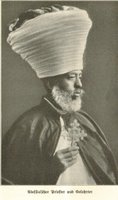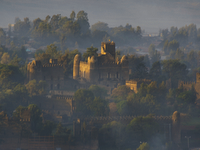
Western banking systems use loans and interest rates to bind a creditor to a debtor. With increasingly high interest rates, often debtors are mentally, socially, and even physically chained to banks. Up to the 19th century, in Ethiopia, being chained to your creditor was literally a reality.

It is known as the quragna system and until the debt was paid off, the debtor was chained to the creditor. This harsh system was made illegal in the early 1900s by Lij Iyyasu of Wallo. A hundred years later, to the west of Ethiopia, a woman used the same creditor/debtor binding system on her 15 year old daughter. A mother was chained her run-away daughter "out of love" in Massachusetts, USA. You can find the article about the mother-daughter Quragna system at: http://news.bostonherald.com/localRegional/view.bg?articleid=132092

Another mother chained herself to a delinquent teenager in a fashion similar to the Ethiopian Quragna system where a creditor is chain to a debtor. Rebellious Tonya Kline was ordered chained to her mother Deborah Harter by order of Judge Wayne Creech of Charleston South Carolina. This prevented the daughter from going back to the detention center until sentencing day. The mother wanted her to be at home expecting her to wear an electronic monitoring device but the judge ordered the shackles instead as there was no law against it. In Ethiopia the Quragna Law was outlawed by Lij Iyasu at the turn of the century. Tonya had to wear a prisoners shackle (belt) which was chained to her mother by a chain. Tonya was only free when she had to go to the bathroom and the shower. Tonya’s crimes was truancy, shoplifting and breaking into homes. Tonya said “Its taught me a lesson” and “ I’m already straightened out”. A by-product of this chaining was that a stronger bond developed between the daughter and the mother. (You can find the article about the mother-daughter Quragna system in The Washington Post Dec. 15, 1995 by Bruce Smith of the Associated Press)
Learn more about Quragna by reading a book by Bahru Zewde A History of Modern Ethiopia.
Pictures are from the Ethiopian Tewodros II Ethiopic Library, the Washington Post and Boston Herald.








No comments:
Post a Comment